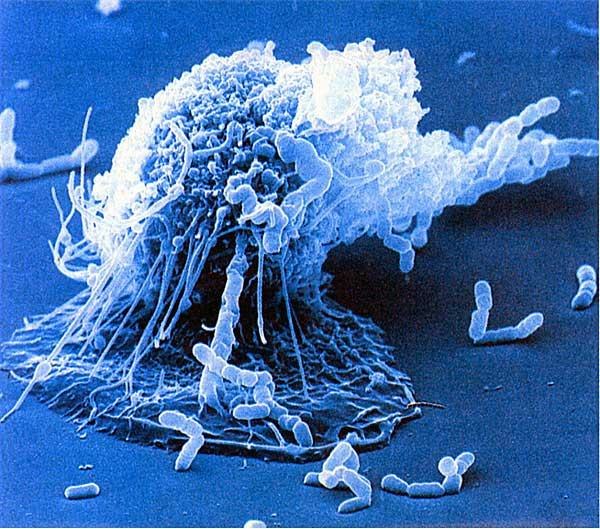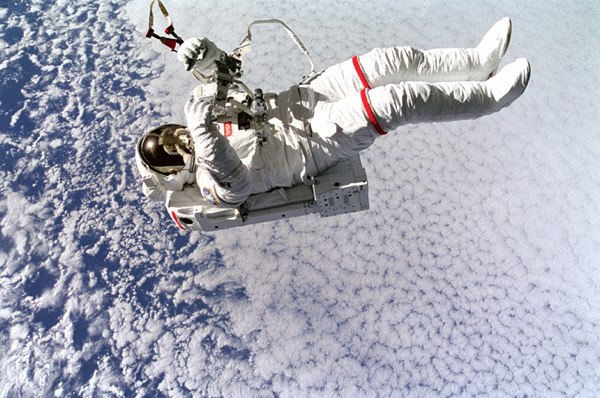 Creepy
Creepy  Creepy
Creepy  Movies and TV
Movies and TV 10 Movies That Get Elite Jobs Right, According to Experts
 Weird Stuff
Weird Stuff 10 Times Real Laws Were Based on Bizarre Hypotheticals
 Animals
Animals 10 Inspiring Tales of Horses Being Human
 Mysteries
Mysteries Top 10 Haunting Facts About the Ghost Ship MV Alta
 History
History 10 Surprising Stories About the Texas Rangers
 Humans
Humans 10 Philosophers Who Were Driven Mad by Their Own Theories
 Miscellaneous
Miscellaneous 10 Video-Game-Worthy Weapons and Armors from History
 Weird Stuff
Weird Stuff 10 Psychics Who Accurately Predicted Wartime Events
 The Arts
The Arts 10 Pieces of Art Inspired by a Broken Heart
 Creepy
Creepy 10 Death Superstitions That Will Give You the Creeps
 Movies and TV
Movies and TV 10 Movies That Get Elite Jobs Right, According to Experts
 Weird Stuff
Weird Stuff 10 Times Real Laws Were Based on Bizarre Hypotheticals
Who's Behind Listverse?

Jamie Frater
Head Editor
Jamie founded Listverse due to an insatiable desire to share fascinating, obscure, and bizarre facts. He has been a guest speaker on numerous national radio and television stations and is a five time published author.
More About Us Animals
Animals 10 Inspiring Tales of Horses Being Human
 Mysteries
Mysteries Top 10 Haunting Facts About the Ghost Ship MV Alta
 History
History 10 Surprising Stories About the Texas Rangers
 Humans
Humans 10 Philosophers Who Were Driven Mad by Their Own Theories
 Miscellaneous
Miscellaneous 10 Video-Game-Worthy Weapons and Armors from History
 Weird Stuff
Weird Stuff 10 Psychics Who Accurately Predicted Wartime Events
 The Arts
The Arts 10 Pieces of Art Inspired by a Broken Heart
10 Issues That Are Hindering a Voyage to Mars
Any mission to Mars would be fraught with difficulties – but as this list will show, none of the challenges are necessarily insurmountable. Decades of experience in space travel have shown that a dash of ingenuity – as well as a hefty dose of gritty determination – can go a long way when it comes to fulfilling our cosmic aspirations.

The entire Apollo Moon Landing Program of the 1960s and ’70s cost the United States about $25 billion. Most of this was spent leading up to Apollo 11, after which, most of the problems of landing on the Moon were solved and the subsequent missions became cheaper. A manned mission to Mars would cost exorbitantly more, firstly because of the cosmic distance to be traveled, anywhere from 36 million to just over 250 million miles (Mars’s orbit is quite eccentric).
Secondly, there are many strange occurrences that far out in deep space, any one of which can kill a human very easily. As soon as we leave our atmosphere, the Universe is essentially trying to kill us. And if we send 3 or so humans 250 million miles away, we must have every possible eventuality planned for ahead of time. To plan for each requires money, and the most conservative estimates amount to a ridiculously optimistic total of $1 billion. And if the national (and by extension global) economy continues to decline, progress toward a manned mission will remain agonizingly slow. Many of the following entries relate to this one.

Ever wonder why technicians and scientists, working on spacecrafts and equipment due to be sent into space, dress like surgeons in a hospital? For the exact same reason: to avoid transmitting germs. Some pathogens are known to be able to survive the environment of space. Deinococcus radiodurans is one of the toughest known organisms of any kind. It is a bacteria, not a virus, and can withstand a dose of 5,000 grays of gamma radiation, where 5 grays is sufficient to kill an adult human. The only easy way to kill it is by boiling it, and this requires 25 minutes, while botulinum dies after only 2 to 7 minutes.
Deinococcus can be found in spoiled food, sewage, household dust, and many other places. So what happens if a mission to Mars introduces it to the Martian environment? We still don’t know if there is any life on Mars, but with missions like the Curosity Rover, we draw daily closer to saying “yes.” If so, it is most likely microbial, and has never encountered any life from Earth. Deinococcus does not harm humans, but very well could be disastrous for extraterrestrial life.
Because of scenarios like this, critics have questioned the ethics of ever setting foot on any planet that could harbor life, and any mission proposal must deal with it in some way before going ahead.

To date, all of our activities in space have been undertaken via rocketry. We have to escape Earth before anything else, and our velocity must be 11.2 km per second. That is approximately 25,000 mph. The fastest bullet travels at some 3,132 mph. The only means we know of by which to propel an object out of Earth’s gravitational field and into orbit and beyond is to set the object on top of a gigantic bomb, the explosion of which we can control very well.
The fuel required to propel the Space Shuttle into orbit weighed 1,100,000 pounds per each of two rocket boosters, most of it made of ammonium perchlorate and aluminum. There have, miraculously, been very few disasters involving these rocket-powered manned ascents into space – the Challenger disaster of 1986 most notable among them. But danger aside, rocketry is, in most astronautical opinions, grossly inefficient in transferring crafts into space.
In most of the science fiction stories, TV series, and films, exit from Earth into orbit and beyond is accomplished via some other means that is rarely explained, precisely because we have, as yet, no complete comprehension of a propulsion method other than rocketry. Almost all vehicles, including airplanes, are propelled by internal combustion, and this means burning a fuel. But nothing we know of can burn without oxygen, which is why most modern airplanes still can’t fly out of our atmosphere; they stall and plummet.
Scientists are hard at work trying to invent alternative methods of propulsion that do not require combustion. These usually entail anti-gravity. The spacecrafts in the Star Wars films all simply lift off the ground and fly into outer space, and a craft that can do this would make a trip to Mars much easier to initiate.

You may also call this “cabin fever.” We don’t like being cooped up in a car for 200 miles at a time. Ask any highway patrolman, and he’ll tell you that if you put Jesus and Gandhi in a car for long enough, they’ll start fighting. Now imagine enduring the cramped living conditions of the Apollo command module for 8 months with little to do. Then, after a few days, maybe a month, of delightfully exciting Martian excursions, looking forward to another 8 months of little to do but be cooped up.
See #3 for a good method by which to combat what astronauts call “space dementia.” But the primary way to avoid it is by taking the astronauts’ minds off their isolation. The main reason why there have been no violent crimes in space to date, from any nationality, is twofold: first, the stays in spaceflight have been brief. The longest unbroken duration in space is 437.7 days, for Valeri Polyakov, from 1994 to 1995. He was physically alone for 258 of those days, but at all times was in direct communication with his Russian headquarters, and conducted 25 scientific experiments. Thus, he was rarely alone with nothing but his own thoughts for company.
He stayed in orbit for so long to prove that a healthy mental state can be maintained for the duration of a manned mission to Mars – and when he disembarked back on Earth, he insisted on walking on his own to prove that this would be possible on Mars (see #5). But his psychological evaluations noted a marked deficiency in his emotional state and overall mood. He was observed to be much more morose than usual and easily irritated by simple questions.
Now consider that communication intervals en route to Mars will become progressively longer until, in orbit around Mars, the radio signals, which travel at the speed of light, will need up to about 22 minutes to travel the roundtrip. If it sits at its slightest possible distance from Earth, the radio signals will still need about 6 and a half minutes for the roundtrip. Emotional fulfillment with intervals of 20 minutes between speeches is impossible, and the human interaction is effectively invalid. The crew, meanwhile, may well get tired of one another’s company long before the spacecraft reaches Mars. Then they have to dread the return. Space programs employ psychologists to choose crew members based on how well they can get along with one another, and it may be impossible to do so for this long.

The primary requirement from a spacesuit is pressurization, since without it, a human will inflate to approximately twice normal size and appear somewhat like a powerlifter. Death is not caused by flash freezing or the blood boiling, both of which will occur, but by the air-filled lungs popping like balloons. If you do not hold your breath, but blow it all out, you will black out due to asphyxia in about 15 seconds, and die within 1 minute, well before you freeze or your blood boils. Almost all spacesuits – from Yuri Gagarin’s SK-1 to present – have been inflating suits, which pressurize the body by expanding like balloons.
These have done their job magnificently up to now, but astronauts’ stays in space have rarely been for very long. The suits are bulky, ungainly, and do not allow very good freedom of movement. On the Moon, the astronauts found it easiest to ambulate by “loping,” or half-running, half-jumping, and this was due to so little gravity – but Mars has just under two-fifths of Earth’s gravity, and will make Earth-style ambulation noticeably easier: the astronauts will be able to bend their knees and stride straight forward, but will momentarily leave the ground for a few inches. We cannot precisely reproduce this gravitational pull on Earth; water provides a sufficient degree of weightlessness, but slows the limbs’ movement.
What we need for Martian excursions is a form-fitting suit, the opposite of an inflated one; instead of pressurizing the suit, the suit pressurizes the body itself by constricting it in a tight elastic shell that covers everything but the throat and head. The suit can thus weigh only one or two pounds, instead of the 200-pound A7L worn by Neil Armstrong and Buzz Aldrin. The drawback to the skintight suit is the discomfort it causes to the groins of men and the breasts of women, even when a protector is worn. It must also incorporate a cooling ability, or the astronaut will succumb to heat exhaustion in minutes.

Zero gravity is a severe problem for long-term stays in space. The body is designed for life on Earth, with a gravitational force of 1, while Jupiter, for example, possesses a g-force of 2.528. In the weightlessness of orbit or space travel, the human body undergoes radical aberrations, especially muscle atrophy and osteopenia, or loss of bone mass and density. To counter these effects, astronauts must exercise strenuously every day for at least 4 to 5 hours, and this cannot be done via free weights, which are also weightless. Spring-powered weights are used, as are treadmills and stationary bicycles, but the long-term results are simply insufficient.
The most well known example of artificial gravity is centrifugal force. A spaceship would have to be equipped with a massive centrifuge, a spinning ring that applies adjustable force perpendicular to its axis. These designs are popular in science fiction films, most notably 2001: A Space Odyssey. The astronaut would be able to walk around the inner wall of the centrifuge as if it were a floor. There is currently no spaceship equipped with such a centrifuge (see #10), but multiple designs are being researched.
Astronauts returning to Earth after only 2 months in orbit are incapable of standing up for more than 5 minutes, and have to be carried or wheeled around until their bodies re-adapt to Earth’s gravity. The effects on the body of an astronaut traveling 8 months from Earth to Mars would be terrible: he would lose 1% of skeletal mass per month, and immediately following the journey he would have to perform major exercise and scientific studies on the surface of a planet with a g-force of just less than two-fifths of Earth’s. Then the astronaut would have to come home.
One method for faking gravity is simple magnetism, but magnetic boots will merely stick the feet to a surface, without weighing down the body at all, and atrophy and osteopenia would persist with almost no change.

Whereas #9 is referred to as “forward contamination,” this entry deals with “reverse contamination.” If you’re familiar with H. G. Wells’s The War of the Worlds, you know that the Martians are killed not by mankind’s combined military power, but “by the tiniest organisms that God, in his wisdom, put on this Earth.” But if we go to Mars and return safely, we may bring about a backward variation of Wells’s vision.
Mars may well harbor life, and if so, we must be extremely wary of it. The simplest life-forms are often the most dangerous. If Martian life is pitiably susceptible to our pathogens, we are equally susceptible to its own, having evolved no immunity to any life-form astronauts may bring back on the outsides of their spacesuits, or spacecraft, or equipment, or even inside their bodies, a life-form having rested in suspended animation for billions of years only to be revived in its favorite environment.
A single Martian pathogen could create a global pandemic that kills absolutely everything on Earth. To combat this, the Apollo 11, 12, and 14 astronauts who walked on the Moon were quarantined for 21 days each, before the Moon was proven bereft of any life. But the Moon has no atmosphere. Mars has one, albeit much thinner, and with a completely different combination of gases than Earth’s. The first astronauts to set foot on Mars will therefore have to be quarantined for quite a while upon their return – and yet, how will we kill any microbe they bring back with them?

This entry relates especially to #10 and #5. We currently have many spacecrafts capable of reaching Mars intact and able to perform their robotic duties – but when we add human lives into the equation, the number of liabilities rises astronomically, if you’ll pardon the pun. It will have to be a spacious craft in order to accommodate 8 months of human mobility. It will also have to be designed with several of this list’s entries, including the next two, in mind.
If it is to have a giant centrifuge for artificial gravity, it will be extremely large and expensive, but most importantly, an extremely complex work of engineering, and dozens of NASA engineers and scientists have stated that, as yet, we simply haven’t developed the technological advancements to construct such a craft. They then offer hope by stating that we should have the technology in the next few decades.

Earth is struck by an estimated 1 septillion meteors, asteroids, and comets every day. Most of them are the size of a grain of sand. Even those the size of a van will not reach the surface. But the Moon has no atmosphere to burn them up, and though it has a much smaller surface area, you need only to glance at a close-up picture of it to get an idea of all the debris zooming around in the Universe. Atmospheres act like incinerators getting rid of much of this rock, metal, and ice, but in true outer space, millions of miles from Earth, there is no atmosphere to protect the spacecraft or crew inside.
Remember in Star Wars IV, when Han Solo reminds Princess Leia that initiating hyperspeed (faster than light travel) without first planning a route can result in flying into a meteor? That was one of the better moments of science fiction realism.
What will happen during an 8-month journey in deep space? There is a whole lot of nothing between Earth and Mars – except debris of all sizes zinging around at up to 50 times the speed of the fastest bullet. We may effectively combat this by covering the craft’s walls with armor plates. But this always comes at the price of extra weight, which will make it all the more difficult to clear Earth’s orbit.

Our atmosphere and electromagnetic field are the only reasons we don’t roast to death this very instant. The Sun’s ultraviolet radiation is mostly stopped by the atmosphere, while visible light, with longer wavelengths, penetrates through to the ground. That isn’t true in outer space. Astronauts’ suits are equipped with visors that stop the Sun’s harmful radiation – and if they don’t screen the faces of their helmets before facing direct sunlight, they will be blistered and permanently blinded in seconds.
Ultraviolet radiation was easily stopped by the aluminum Apollo Program Command Modules, but during their trips to and from the Moon, the astronauts complained of sudden, instantaneous flashes of bright blue or white light. The light was not visible anywhere inside or outside the spacecraft, and did not hinder the crew in any way from performing their duties, nor did it cause them pain.
When subsequent space missions drew similar complaints and descriptions of these flashes of light, scientists investigated and discovered that they were being caused by “cosmic rays,” which is a misnomer. They are not rays at all, but subatomic particles, mostly solitary protons, traveling at nearly the speed of light. They penetrate spacecrafts and technically leave holes in the material they pass through, but these do not allow any leakage because they are smaller than atoms.



